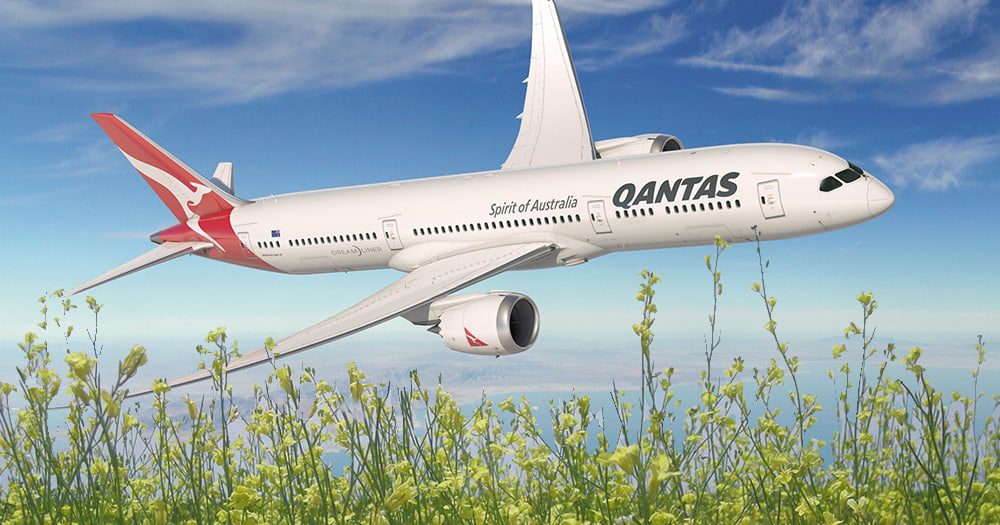The world’s first ever dedicated biofuel flight between the U.S and Australia, QF96 from Los Angeles to Melbourne, has taken off and is set to land in Melbourne tomorrow (30 Jan).
Now, this is pretty damn cool.
Qantas’ historic ‘Farm to flight’ trans-Pacific 15-hour flight is operating with approximately 24,000kg of blended biofuel, saving 18,000kg in carbon emissions in the process.
The biofuel is processed from Brassica Carinata, a non-food, industrial type of mustard seed, developed by a Canadian-based agricultural-technology company called Agrisoma Biosciences.
“Mustard seed you say?” Yep.
The flight is part of the partnership announced in 2017 which will also see the companies work with Australian farmers to grow the country’s first commercial aviation biofuel seed crop by 2020.
Even cooler.

The ‘Brassica Carinata’ a type of mustard seed
Qantas International CEO Alison Webster said it was fitting that the airline’s game-changing Dreamliner 787-9 will showcase the future of sustainable aviation.
“The Qantas Dreamliner marks an exciting new era of innovation and travel. The aircraft is more fuel efficient and generates fewer greenhouse emissions than similarly sized-aircraft and today’s flight will see a further reduction on this route.
Qantas International CEO Alison Webster
“Our partnership with Agrisoma marks a big step in the development of a renewable jet fuel industry in Australia – it is a project we are really proud to be part of as we look at ways to reduce carbon emissions across our operations.”
Across its lifecycle, using Carinata-derived biofuel can reduce carbon emissions by a whopping eighty percent compared to traditional jet fuel.
The ten percent biofuel blend used on today’s flight will, therefore, see a seven percent reduction in emissions on this route compared to normal operations.
Carinita requires no specialised production or processing techniques either. It’s water efficient and The University of Queensland field trials in Gatton, Queensland, and in Bordertown, South Australia, have demonstrated it should do very well in the Australian climate. Good news for everyone.
It is sown in either fallow areas where food crops fail or in between regular crop cycles, known as “cover cropping”. Rotational or break-crops can improve soil quality, reduce erosion for food crops and provide farmers with additional income.
Happy to witness the first biofuel flight between US-Australia @agrisoma_ @Qantas @pierremoreauplq https://t.co/lP8DKRJ4Df pic.twitter.com/TjplBWNI2z
— Ecofuel (@EcofuelStartups) January 29, 2018
Agrisoma CEO, Steve Fabijanski, said biofuel produced from Carinata provides wide-ranging benefits.

“Biojet fuel made from Carinata delivers both oils for biofuel and protein for animal nutrition while also enhancing the soil its grown in. We are excited about the potential of the crop in Australia and look forward to working with local farmers and Qantas to develop a clean energy source for the local aviation industry.”
Qantas’ first trans-Pacific biofuel flight was made possible with the support of AltAir Fuels and World Fuel Services.
QF96 will depart LAX on Sunday, 28th January and arrive in Melbourne on 30th January (local time).
READ: Qantas replaces fuel with mustard seed on L.A flights
READ: Japan Airlines is turning t-shirts into air fuel
READ: Alaska Airlines uses leftover wood to fuel cross-country flight






